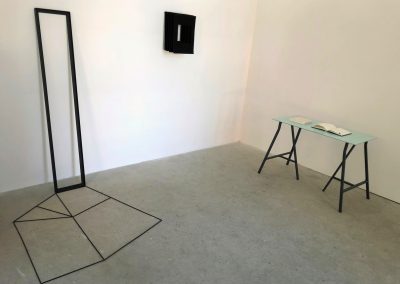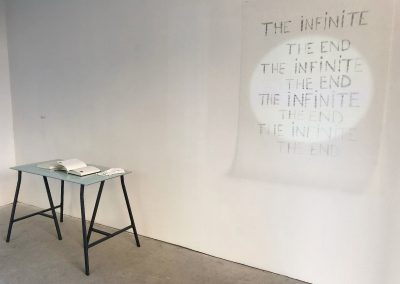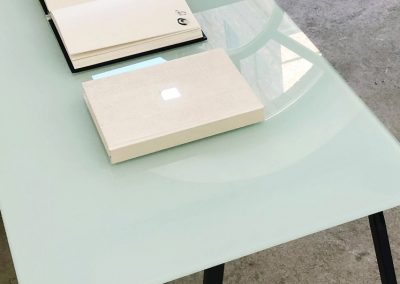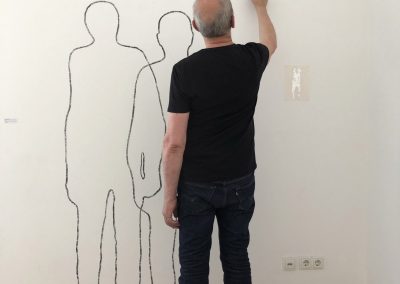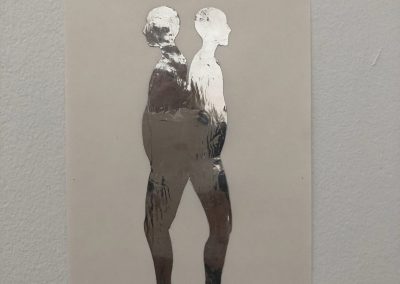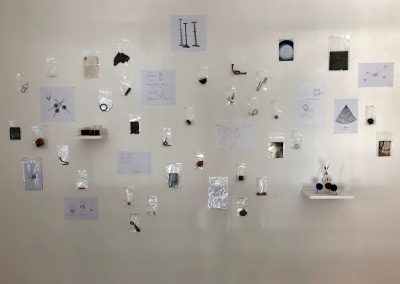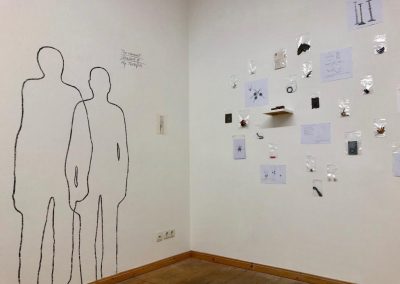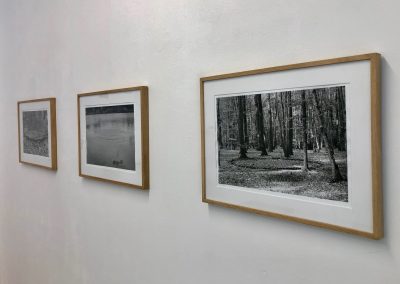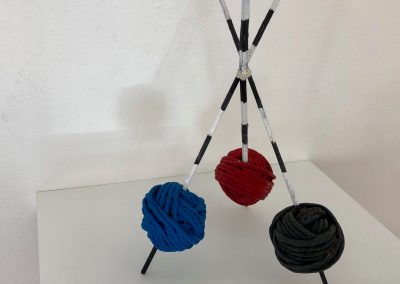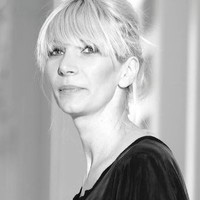
About Adelina Ivan
Adelina Ivan (b.1970) is a visual artist who works with light and memory through textiles, photography, installations and video. Her personal discourse explores the overlap of time, space and memory, their winding and intimate interactions. Just like the fabrics used in her works, time space and memory fold and unfold into sleek silky surfaces and solid depths.
The obsession for the body and for the personal past, so noticeable in previous projects, such as the artworks Atena adjusting her sandal, exhibited in 2016 at ODD in Bucharest or the suite of art-objects and video-works from the exhibition Frugalitas Severitas Fdelis. which took place at tranzit.ro/Bucharest also in 2016, was replaced by experiments approaching the building of the relations between objects and space.
The artist states that these explorations resulted in a sort of mutual transformation in which the object is contained by space, and the space is swallowed by the object, determining an organism built out of pieces with an innate fragility, ready to fall apart only to recompose themselves afterwards. The continuous transformation process of the clothing object, of the fabric, the preservation of its memory, the interaction between the different materials, the space and time dynamics are transposed in the spatial installations stemming from this perspective.
Read more: https://ancapoterasu.com/gallery-artists/adelina-ivan/cv/
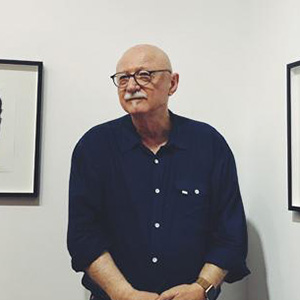
About Decebal Scriba
“Decebal Scriba’s activity in the 1970s, which was overlooked following his emigration to France in 1989, has been recently subjected to a vast process of revisiting (and implicitly, of being placed in a historical context) […]. The extensive recapitulation of these projects and experiments highlights today a strong conceptual interest which is, I dare say, even singular in the Romanian art of that decade. The coordinates of those works open up many levels, including, on the one hand, that of the analysis of the systems of representation and production and reproduction of space, alongside that of the conceptualization of the (visual, mathematical and textual) signification systems and, on the other hand, at the level of a private, interiorized and nearly existential assumption of the artistic act.
The latter always takes place at the unstable border between the inside and the outside, which it transgresses and at the same time suspends, installing the temporary separation between the autonomous space of the self, understood as a filtered interiorizing of the existing symbolic regime, and the public one, specific of the conventional, impersonal and normative codification. this intimate process of reflection on the language and artistic process becomes the catalyst for the visual notes, codified according to a personal, sometimes linguistic, other times mathematical algorithm, which are more often than not enigmatic or abbreviated, and exposed to the public.” – Excerpt from Cristian Nae /A Field of Possibilities – Decebal Scriba and The Semiotics of Appearance published inRevista Arta #21-22/ 2016, Bucharest, Romania
Read more: https://ancapoterasu.com/gallery-artists/decebal-scriba/cv/
Adelina Ivan & Decebal Scriba / The Infinite Convergence, Spinnerei Leipzig at Anca Poterasu Gallery, 2019
As if he’s holding the whole world in his hands, artist Decebal Scriba is walking through the streets gesturing towards a seemingly empty space. His hands, one over the other, leave just enough space for a small, immaterial package. It is with these images, titled ”The Gift” (1974) that I got introduced to Scriba’s work. The most impressive aspect about this very gesture that comes with grandeur in the photos is its symbolic weight, representing everything and nothing at the same time. But, alas, it is not nothing that he carries between his hands, it is the metaphysical materiality of the intangible and tangible surroundings. What seems to be empty space is the totality of the fabric of reality. It is this viewpoint onto the real that leads Scriba’s work to engage with different modes of description or measuring the world using man-made systems. For the exhibition in Leipzig, Scriba has been invited to produce a new installation.
Adelina Ivan starts from another totality, another form of infinity. She uses extensive research on Malevich’s ”Black Square” as a starting point, giving way to the totality of the infinite space inside the square. The installation ” The Infinite/The End” (2019) consists of alternating writings of the two words in the title on a mesh-fabric. Every time an ‘the end’ is reached, an infinite can begin; ‘the end’ is but an arbitrary point in an infinite chain and a futile attempt at conquering the infinity. At the same time, the words fill up the space on the fabric until the captions form a black square, thus forging a linguistic materiality to the infinity of Malevich’s Black Square. With a selection of works based on the same starting point, Ivan proposes an artistic approach to unpack the conceptual depths of Malevich’s artwork, as well as its impact on the world. The strategies she applies vary from spatial extension to inversion of the infinite black square, e.g. ”Journal of grids and signs” (2017-2019), a book covered in white mesh with an embedded centred square mirror encapsulating traces of Ivan’s browsing through it in the form of fingerprints on each page. The mirror offers another form of infinity reflected, while the fingerprint in the book hints towards an endless tracing as a description and a darkening of that immateriality.
The cultural project “The Infinite Convergence” is co-financed by the National Cultural Fund Administration (AFCN). It does not necessarily represent the position of AFCN. The AFCN is not responsible for the content of the project or the manner in which the results of the project may be used. These are entirely the responsibility of the funding recipient.
ARAC is a non-profit organization founded in June 2012, in order to produce and promote contemporary art in Romania and abroad. The initiative of the 58 Plantelor Residency belongs to Anca Poterasu, gallerist and ARAC President. The first edition of the Residency took place in 2015 and it was financed through a grant offered by Norway, Iceland, Liechtenstein and the Romanian Government.

